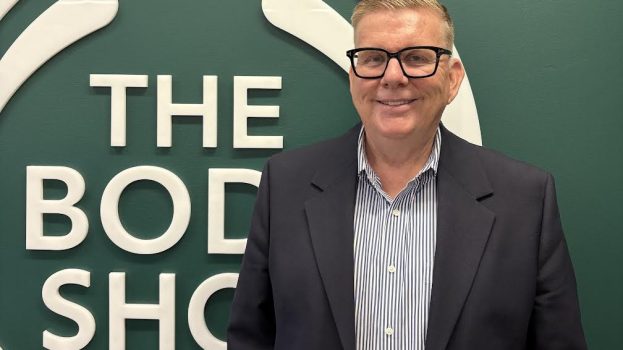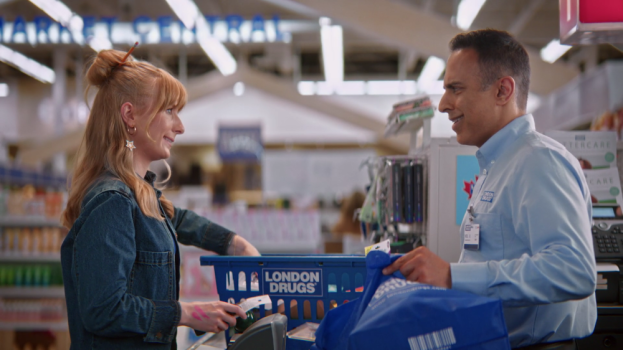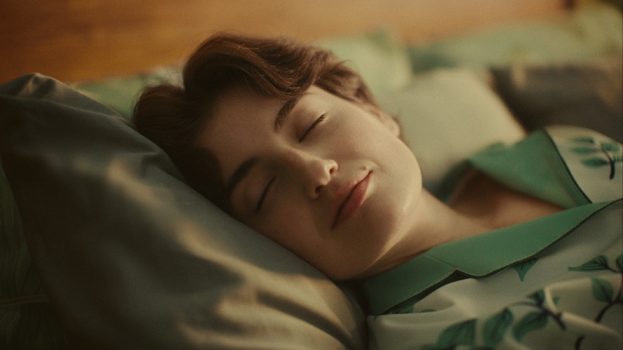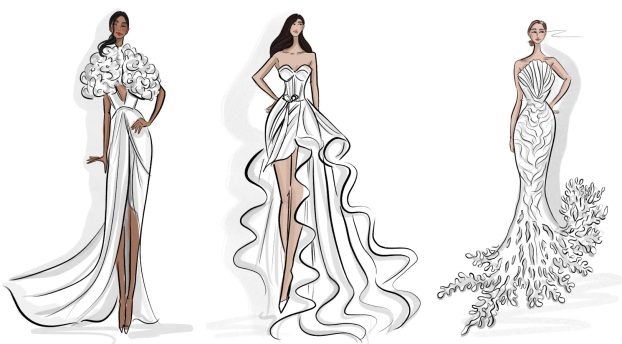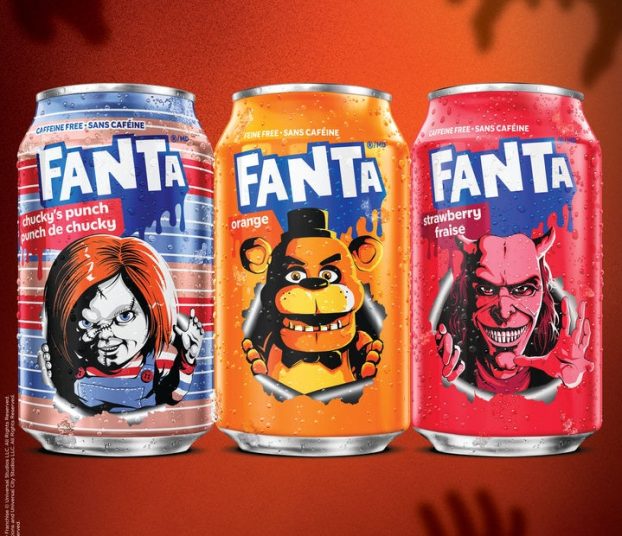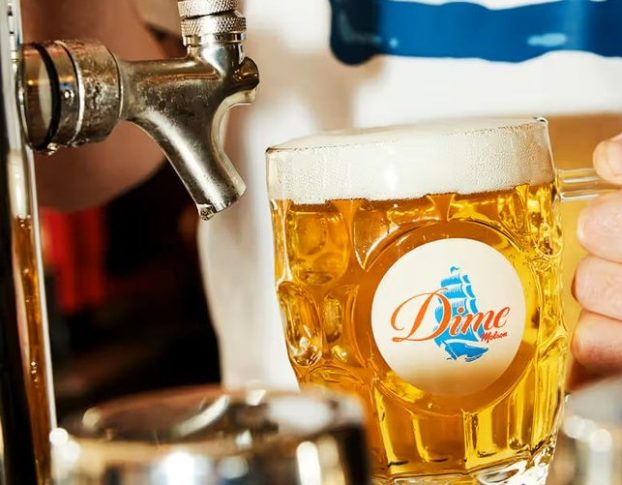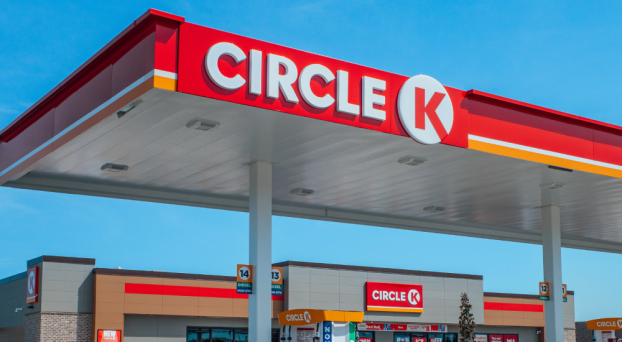If the cosmetics industry has been slow to respond to new attitudes among youth, you have to admit they’ve got it tough. When you talk about youth, you’re talking about image, and image is exactly where the change in attitudes lies.
Today’s young women are independent, self-aware and self-assured, and they want their look to reflect that. What they don’t want is a supermodel setting an impossible example that might not be right for them.
‘This is a happy generation,’ says Pascale LeBlanc of Toronto’s Youthopia. ‘These girls are comfortable in their skin and less afraid of being themselves. They don’t need to have a company telling them what is good for them; they want to know about the products. They know that to feel beautiful you have to be your own self, and they are not going to choose a product that is supposed to make you look different. Forget about all the glitter; just get to the point.’
Michele Erskine of Toronto’s Youth Culture agrees. Girls believe in themselves and they know that trying to emulate a model won’t make them more beautiful.
‘In groups, the girls talk about how great if would be if they had a stylist and makeup artists every day like Britney Spears, but they know that’s not realistic. They want realistic objectives.’
Until now, cosmetics companies have done little to reflect these attitudes in their marketing campaigns, but things are slowly changing. Maybelline now has Sarah Michelle Gellar (star of TV’s Buffy the Vampire Slayer) in print ads, a girl that other girls, according to Erskine, ‘believe that they could possibly look like.’ Aspirational marketing is a natural fit with aspirational products, so what do you do when the perception of your products changes?
Entertainment tie-ins
Entertainment tie-ins offer a chance to add some personality to brands that typically rely on minor product innovation (longer lasting, sleeker packaging) to differentiate themselves from the competition. Following the lead of product placement in Popstars (Salon Selectives) and American Idol (Ford, Coke), health and beauty marketers are looking to entertainment properties as a way to increase their exposure.
In November, Revlon will unveil its 007 Color Collection to coincide with the new James Bond flick, Die Another Day. Products are based on colours from the film’s characters and Halle Berry, star of the new film, models in a national print advertising campaign and a booklet giveaway with advice on ‘How to Achieve the Bond Look.’
The campaign is intended to have wide appeal, but Bond brand manager Katherine Brouillard expects the campaign to resonate with younger girls.
‘Teens and tweens are on a first-name basis with celebrities. For Revlon it’s important that the brand’s key messages are communicated one-on-one in the same way. We have been able to use models in a personal way.’
That may raise the recognition factor at the cosmetics counter, but younger consumers are not likely to feel differently about Halle Barry than any other model. The colours have changed, but the message hasn’t.
Going local
In Quebec, teen-targeted brand Maybelline, from Montreal-based L’Oréal, used a partnership with CBC’s La Fureur to gain brand awareness.
Part game show, part Broadway musical, the weekly La Fureur features two teams, men vs. women, competing in front of a live studio audience by singing karaoke, answering music trivia, and recognizing pop songs. The entire audience singing along in both French and English is quite a spectacle, but to Quebecers, the show’s massive popularity stems from the fact that it regularly features Quebeçois actors, actresses and musicians as contestants.
From March 6 to May 2, Maybelline was the show’s principal sponsor, occupying all of the program’s bumpers, as well as opening and closing billboards tailored specifically to the program. The program even featured what was known as ‘the Maybelline game,’ which featured songs that used the words ‘lips.’ The winner of the game was seated on a couch in the shape of giant lips.
Maybelline also sponsored a contest on college and university campuses for people who wanted to appear on the show. As well, they supplied cosmeticians in drugstores across Quebec with balloons, posters and other materials to compete amongst themselves for the best in-store display, for the grand prize of a place on the show.
At the end of the show’s season, Maybelline held the title sponsorship of Celine Dion’s first concert since her much-publicized pregnancy. She played a special game of La Fureur in front of 18,000 people at Montreal’s Molson Center. After the show, over 30,000 people called in to vote on which of the songs they liked best – enough to overwhelm the telephone system.
Tony Attanasio, VP of the tactical group at Montreal-based Marketel-McCann Erickson, which handles the Maybelline account, explains the project’s success:
‘Maybelline is a well-known brand, and usually scores around 90% on aided recall, but the problem is always the connection to the consumer: what does it really mean? Our connection with La Fureur raised our market share incredibly. In the rest of Canada, Maybelline has maintained or lost a little of its market share. In Quebec, it’s increased more than 20%, and it scored very high with the target market, 16- to 24-year-old girls. With exactly the same kind of media weight across the board, we know that the specific association with a highly visible local Quebec property multiplied our results two- or three-fold.’
Real results. For cosmetics companies, there is also another reason to get youth excited about your brand on television, and it’s not just the cradle-to-grave theory. Youth sells. And makeup sells to people of all ages. Getting your brand associated with youth on a widely popular television show can add youth cachet to your brand. According to LeBlanc, moms are just as likely to try out new teen makeup products as their daughters (she even comments that it’s now ‘cool’ to shop with your mom). And making mom think she’s hip is an important component to a good branding strategy.
Letting youth be themselves
Procter & Gamble Canada successfully took an all-ages product to young women this summer with the Pantene Pro-Voice Tour. Almost 1,000 people showed up to cheer on the finalists of a nationwide singer/songwriter contest at Toronto’s Harbourfront Centre in August. The winner won the opportunity to record a demo with Warner Canada (slightly more realistic than the Popstars promise of instant pop star fame), and to go on tour as an opening act with an as yet unnamed band.
Stefani Valkonen, external relations manager for health and beauty at P&G Canada, says that the impetus behind the project is that ‘music plays a very important role for young adults.’
That said, the company also felt the tour ’embodied the spirit of Pantene, which is really about being yourself and accepting yourself.’
Pantene still runs their usual flowing-hair ads on television. But according to Valkonen, ‘younger women appreciate something like [Pro-Voice] because it recognizes them on their own merits.’
What young women really want
In spite of Maybelline’s success, LeBlanc warns that entertainment tie-ins may not work for everybody. The problem is that while many companies see tie-ins as a safe way to maximize brand awareness, that awareness may not always be positive or lasting.
‘A tie-in with American Idol will only talk to one type of girl. We should not generalize. I would say there is a 50/50 split of girls who think this is tacky vs. girls who buy into it. They have millions of viewers, but there are also people who are curious but may not want to associate themselves with that crowd.’
LeBlanc points to c*me cosmetics as an example of a cosmetics company with the kind of approach a lot of girls will appreciate.
Illinois-based Caboodles Cosmetics launched c*me (pronounced ‘see me’) in Sears across the country this July from their Canadian office in New Westminster, B.C. Marketing has been low-key, focusing on simple designs and low prices that will appeal to girls. Stella Tinglin, c*me brand manager, says ‘We have created a line of cosmetics that showcases the natural beauty of teenage girls. Many of our products are sheer and clean for a natural look, or they can be blended to create a glam look with lots of glimmer and shimmer – anything a girl wants to do to complement her own sense of style and personality.’
Just one look at the c*me Web site (www.cmecosmetics.com) makes it clear that this is a company for confident young girls. The models all look like people that might go to your high school. They’re pretty, but not stunning. The site is very simple, with product news as prominent as open chat rooms where girls can share tips on makeup or fashion.
The bottom line is that girls want to try new products (unless they think it might harm their skin, or have been tested on animals). They are serious about their makeup and they want beauty manufacturers to take them seriously.

